Adaptive Short Primer
The Format, Bidding Strategies, and How to Improve at Adaptive Short
Most of us in the Sloppy Lab hold pretty strong opinions on Adaptive as a format. If you’ve interacted with us at all over the years, you probably already knew that. In fact, I’ve become even more vocally supportive of its merits over the years, even as it has faded into the background of official organized play plans. That is not a coincidence. It’s a format that deserves attention, and I enjoy putting the spotlight on aspects of this game that don’t get the recognition they deserve.
I am here to advocate for Adaptive as a format to regain serious consideration in the official organized play competitive scene. While it’s not a format for everyone, those who do believe in this format are staunch proponents. This is the perfect way to hearken back to KeyForge’s early days, when it was popularized as a game for having something for everybody. Therefore, in an extremely optimistic approach, I am here to talk to you in strategic detail about getting better at Adaptive Short with the hopes that we will see it more competitively in 2025.
This is a fairly lengthy analysis of the format and strategies, so to make it easier to find what you're looking for, I've included a table of contents below.
- The Format, Bidding Strategies, and How to Improve at Adaptive Short
- What is Adaptive Short?
- Why are you talking about Adaptive Short NOW, of all times?
- How to Choose a Deck to Bring
- Intro to Archon Card Evaluation
- What to Look For When Comparing Decks
- Bidding Strategies When Choosing the Same Deck
- General Bidding Tips
- Finally Ready to Play a Game?
- Epilogue: Bidding Heuristics
What is Adaptive Short?
The specific variant of Adaptive I’m focusing on in this article is known as Adaptive Short – or Adaptive Best of 1. This is distinct from the more commonly played Best of 3 variant, popularized more recently by the KAGI league run by Murph (Fudgenator) and myself in the KAGI Discord server. In the popular Best of 3 variant, players first play Archon, then Reversal (with the same decks), and then if the same deck won both games, players bid chains for the right to play the winning deck in game 3. This gives both players a game with each deck to help gauge the matchup and determine what the right amount to bid is (if game 3 is necessary). Adaptive Short, however, doesn’t give you the luxury of playing the matchup before deciding what to bid. Instead, you only get to look at each Archon card (2 minutes is the standard time restriction for this step) and evaluate the strengths and weaknesses in the specific matchup. Then, both players simultaneously decide which deck they prefer to play in the matchup. If players choose different decks, they simply play the deck of their choice in a best of 1 game. If they choose the same deck, players go straight to bidding – using only their knowledge of their own deck combined with their quick evaluation skills – to determine what the right bid amount is.
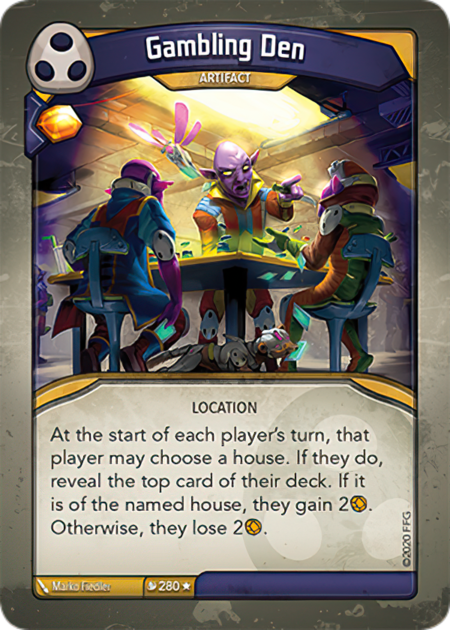
Needless to say, Adaptive Short is a very skill testing format. You not only need to be able to read an Archon card well and pick out what a deck is trying to do, but you also need to understand that specifically in the context of the matchup you are about to play. I hope to share some insights and strategies for how to do this well throughout the rest of this article. But first…
Why are you talking about Adaptive Short NOW, of all times?
It’s a valid question. Adaptive isn’t part of competitive play plans right now. Adaptive Short isn’t even commonly played at the casual level. As we continue to see players disengage with the game over power creep introduced by Grim Reminders, I have found myself searching for what I enjoy and what I want out of KeyForge. What I’ve enjoyed the most is playing Adaptive, which lets me use some of my favorite decks regardless of their power level. Right now, all of the official formats supported by Ghost Galaxy encourage players to bring their most powerful deck (or in the case of sealed, simply open the most powerful deck/pods you can). Adaptive hits on another axis, allowing a wider range of players to still engage competitively with KeyForge in a way that doesn’t ask them to spend hundreds of dollars or more finding a deck capable of competing at a Vault Tour.
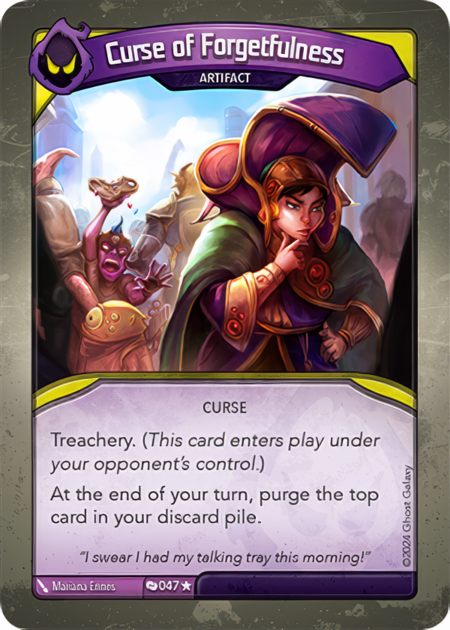
One of the primary criticisms of Adaptive as a premier level format is that the best of 3 variant takes too much time to complete when playing in a group of just dozens of players or more. Adaptive Short solves this, by making each round remain 1 game just like it is in Archon, Sealed, and Alliance right now. The logistics of the event work just the same, and you attract types of players who aren’t engaged with Archon or Alliance. For these reasons, it is a perfect complement to Archon/Alliance and Sealed as the premier formats at Vault Tours and KeyForge World Championships. In fact, at the 2024 Rochester Vault Tour, we held an Adaptive pod of 8 players (we like to say the first ever Ghost Galaxy sanctioned Adaptive event ever), playing 3 rounds of Adaptive Short to determine the winner, just like a sealed pod at a Vault Tour would. We found enough eager players easily, and had many others signal interest in playing at another time. Later in the season, additional Adaptive pods were played at other Vault Tours as well, and there will be a large, organized KAGI Live event celebrating the format at KFC 2024.
How to Choose a Deck to Bring
As stated earlier, one of the most elegant parts of Adaptive is that it allows you to bring any deck and compete. While this is true, it’s also my opinion that your choice of deck can still increase your chances of winning. While there are few wrong answers for what to bring, there are certainly some answers that are more right.
The most important factor for your adaptive deck is the same as your Archon deck: familiarity. It’s even more crucial in Adaptive to understand your deck inside and out, because you’ll be playing against it as well. Work to recognize your deck’s strengths and weaknesses. One reason I love practicing with adaptive decks is that you don’t have to care if you win or lose. When you win, think about what your deck did well to win. More importantly, when you lose, think about what caused the game to go wrong for your deck. Use these games as a learning experience, rather than a competitive game where you want to win. It makes playing KeyForge in general a much better experience, and thinking like this is one of the best ways to become familiar with your deck.
One of the next most important factors to me in my choice of adaptive decks is finding “tricky” plays. This is different from combos. For tricky plays, you want cards that work together in unusual ways, or perhaps ways unique to your deck, that aren’t obvious without specific experience with those cards. I find rares, and especially double sided artifacts (artifacts that create static effects that impact both players equally), are best suited for this role. You’re looking for strategic complexity and tracking complexity – my favorite choices for this are cards like Tide Warp, The Ulfberht Device, Whirlpool, and Curia Saurus. These cards can also be something your deck actually wants to discard in some situations. One of the most common mistakes players make when unfamiliar with a deck is playing a card for the æmber when they would be better off discarding it.

Another important factor is the decision points your deck offers you as the player. These are conscious options you have in a moment that will affect your outcome down the line, such as targeted archives, off-house plays or house cheating, and targeted recursion. This type of efficiency is much more skill testing and more difficult to maximize than other types of efficiency. Bonus draws, random archives, and dangerous random plays (such as Wild Wormhole) all offer efficiency, but sometimes their outcomes can swing a match in an uncontrollable way. They are not bad in an adaptive deck by any means, but make sure you distinguish the type of efficiency your deck offers, and focus on practicing the targeted decision points to get the most value out of the choices. This aspect is also why I find Logos, Geistoid, and Star Alliance to be three of the strongest choices for adaptive.
Lastly, I want a deck that is low on variance. It’s important that you know what your deck will do in most games, and that it is not reliant on proper draws to come together. Some obvious examples of high variance decks are high token generation decks, Grim Reminders decks that can mill the wrong cards (or, perhaps not mill the right cards), or just generally low efficiency rush decks (such as Call of the Archons Untamed rush decks with key cheats, but also slow complementary houses). In best of one formats, you have the chance of being eliminated by the deck you bring either not drawing the right pieces for you, or drawing all the right pieces for your opponent. Of course, your opponent might bring a deck like this, but that is out of your control.
There are additional (different) considerations for Adaptive best of 3, but I won’t go into detail on those here.
Intro to Archon Card Evaluation
You are now paired up and get to evaluate what your opponent has decided to bring to the match. This part is all about evaluating your opponent’s Archon card, without the benefit of 3rd party resources like Decks of Keyforge (or even the enhancement data in the Master Vault, in most cases). There are some existing resources that are very useful for learning how to read an Archon Card. The Weekend KeyWarriors Podcast episode 10 goes into detail on this, as does this article by Austin Kukay (RealPlayerOne). Credit to these players for putting together this content before me (so I don’t have to).
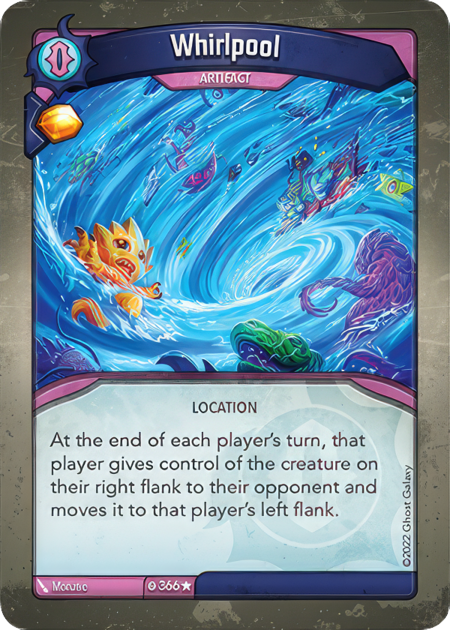
It’s a good idea to train yourself to not rely on tools like Decks of KeyForge. It will make you capable of picking out the important details more quickly, and it will also help you avoid being influenced by The Big Number (aka, the deck’s SAS), or other statistics that may lead you to misinterpret how a deck plays. SAS as a tool is telling you about the value of a deck in a vacuum. It doesn’t take into account a specific matchup. As we all know, a deck with a SAS in the mid 60s may actually be favored against a deck that is scored 80+. If you look at those big numbers when evaluating, it might lead you to favoring the wrong deck just due to unconscious bias.
As a rule for myself, I never check 3rd party resources when playing an Adaptive match (short or long) – I enjoy the analysis and I don’t feel influenced in my bidding by a deck that is over- or underrated by SAS. Additionally, when playing in person, you won’t have these tools available to you either. The old adage of “practice how you play” applies here as well.
What to Look For When Comparing Decks
By this point, you have chosen a deck you are familiar with, you know your deck’s strengths and weaknesses, and you know what cards you have to look for in your opponent's lists (and also what you don’t need to worry about). If your deck has no important artifacts, you don’t need to spend time analyzing the artifact control in your opponent’s deck, which saves you time in the evaluation process. In the context of an adaptive match, what do you look for? And how do you prioritize what is important in the opponent’s list?
To start, I like to count 2 elements that I find most important, that help you boil down the deck’s identity quickest: creature count, and bonus æmber. To get a more meaningful count of the bonus æmber, I also include any cards that offer the opponent æmber on a play effect as well, such as Information Exchange, Ronnie Wristclocks, and Free Markets. Don’t forget to look for cards that offer enhancements for additional æmber – if you only counted 8 bonus æmber but didn’t think to count anything for the 4 Gloriana’s Attendants in your opponent’s list, your evaluation will be considerably off. By comparing these totals to your deck (which you already know from being familiar with it), you can already get an idea of which deck is going to be more likely to have a big board, and which deck is going to be able to burst through simply playing cards.
This count, of course, can only be done if you have complete knowledge of the card pool. This is obviously a considerable investment to do so, but I find it is the best way to start to get better at KeyForge, and especially Adaptive.
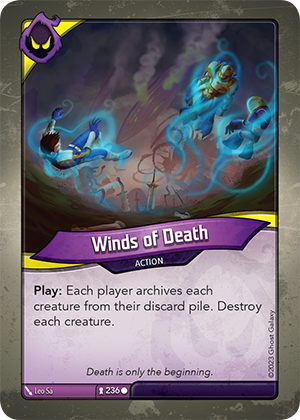
After checking these base counts, look for any obvious combos you will need to be aware of for the bidding, such as Martian Generosity and Key Abduction, Binate Rupture and Interdimensional Graft, or Winds of Death and just about anything (kidding, sort of – but good combos with this include Key Abduction, Might Makes Right, and Crop Circles). Evaluating any combos will help you determine what the deck’s game plan might include (but is not necessarily the deck’s only identity).
Beyond this, look for other cards that have a great impact on the entire board state, such as board wipes (particularly if your deck relies on creatures to win), artifact control (if you have any important artifacts), and scaling æmber control (Too Much To Protect, Interdimensional Graft, and Doorstep To Heaven should always stick out). Knowing what kinds of answers your opponent has can influence how your game plan will unfold. If they have no board wipes, your best plan of attack might be to establish your own board and continue to reap/fight with it.
I also like to have an idea of what “out of hand key control” your opponent has in each house. This is different from æmber control. Sometimes you might see a list with Too Much To Protect, but no other steal or capture in Shadows. This means if they have nothing on board to capture, you know they can’t take you off check if they call that house. This becomes relevant especially later in the game, as you are trying to predict and influence their house choice through your own actions. If they have no key control in Logos, you know you can leave all of their Logos creatures alone as long as you’re checking for the third key. If you’re playing Control The Weak, Mark of Dis, or Befuddle, you can ensure you get to forge by forcing them into a house with no key control.
There are many other factors you could include in your evaluation, but these ones are my favorites to look at in the short period before you decide which deck you want to choose to play. All of these elements will contribute to the game plan of what the deck is trying to do to win, and what answers it has to prevent the opponent from winning. It’s important to envision what each deck’s path to victory could look like before choosing or bidding. Having empathy for your opponent’s deck at the deck evaluation stage is crucial to being able to see this. If your deck is the underdog, you still need to be able to determine how your deck could possibly win when evaluating the right bid amount.
Remember that KeyForge is a racing game. In its simplest terms, you're trying to get 18 æmber before the opponent. Cards can speed that up for you or slow that down for your opponent, but you should be choosing the deck that will be able to win that race. This is why I value looking at the expected æmber generation a deck will be able to produce (on play or by using the board) and what the opposing deck does to prevent that. Compare the makeup of the decks with these factors in mind and choose the one that you believe will win the race.
Bidding Strategies When Choosing the Same Deck
Now you’re ready to choose which deck you and your opponent want to play in the match. There is a decent chance both players choose different decks. Many players have a tendency to have more confidence in their own deck due to their familiarity, or perhaps both think their opponent’s deck looks like a better matchup on paper. If this happens, it’s natural to feel like you missed something. Go over your envisioned game plan to win with the deck you’ll be playing and quickly scan both decks to make sure you didn’t miss anything important.
If both players chose the same deck, you then have to consider how many chains you would be willing to take that will still let you stick to your envisioned game plan and win. It’s good to have a flexible starting point in your head before bidding starts, but it doesn’t have to be a hard and fast rule. Use the time bidding wisely, continue to look at the lists, and go with your gut if you get to a point where you are unsure whether or not to continue.
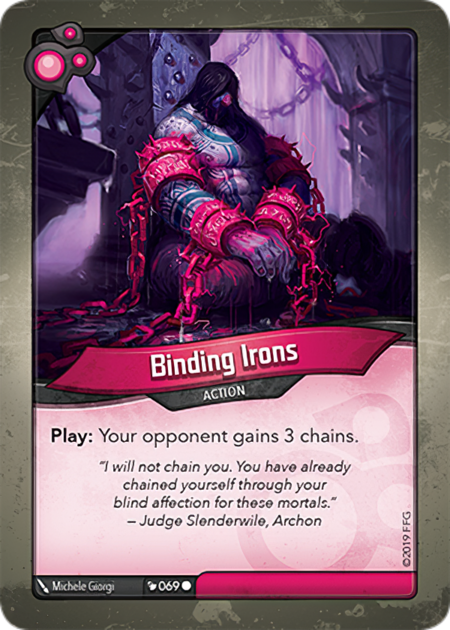
Look for cards in each deck that can mitigate/increase the chains. This can greatly influence how high you want to bid. Cards like Binding Irons can play a key role in an adaptive match as well, and should be considered during the bidding. On the other side, cards that offer efficiency can offset the effect of chains quite well. Auto-Encoder or multiple Tautau Vapors, for example, can increase the amount you may want to bid on a deck. However, if the efficiency is centered around a single card, be aware that higher chain bids might prevent you from finding that card in time.
Consider the æmber generation you counted earlier. This is an indicator of each deck’s ability to burst quickly. 15+ could be considered a rather rushy deck, and 20+ would be exceptional. If the deck you’re bidding on has more burst than the other deck, consider a higher bid. If it has less burst than the other deck, you will want to reduce your max bid slightly. Higher rush decks on either side will make the game shorter overall, which lessens the impact of chains. If a game may only last 7 turns, chains beyond 7 don’t have the full impact (although having multiple turns at 4 cards in hand still has an impact). In my experience, the ability for a deck to rush with lots of æmber is the single most important factor I consider when evaluating a matchup for bidding.
Similar to the æmber generation, the creature count may be the second most important factor. If one side has a lot of creatures (especially 8+ in a single house), and the other deck has no board wipe, that will heavily influence my decision to bid higher on the creature heavy deck. Creature count is just a different form of rush than æmber burst. Both elements give hints as to how a deck will be able to get to 3 keys. While creatures will be slower to burst than bonus æmber, they can also make more æmber over time if left unanswered. Especially powerful are creatures that give you efficiency, such as Com Officer (or Subject) Kirby, Information Officer Gray, and any of the Techno- or -Bot mutants from Mass Mutation. When given the chance to reap, these cards will not only make æmber, but they will cycle cards, increasing the chance at even more value from the same house on future turns. If the deck you’re bidding on perhaps has just one good answer to a wide board, and you bid too high for it, then you may find yourself slowly digging for it before it gets to be too late.
For any deck, consider how long it will take to make 18 æmber (the equivalent of 3 keys), whether that is via bonus æmber/play effects or reaping out. If it’s longer than 10 turns, consider the deck more on the “grindy” side, and know that the matchup may require more chains to balance.
Some more difficult calculations will have to take place if you’re bidding on a combo deck. How game altering is the combo if it is played? Does the deck have targeted archives in place to help set up the combo? Do you think the other deck can win before it finds the combo? These are all difficult or impossible questions to answer, and the impact also depends on the scale of the combo. Some combos basically amount to a free key, which shortens the game significantly, and thus increases the amount of chains worth bidding on it.
Finally, try to see if there is a tipping point in the matchup. That is, does a certain deck reach inevitability once they reach a certain board state? Perhaps they have a soft lock with capturing æmber on a warded board, or they have enough purge to take away all of your potential paths to victory, or a few copies of Effervescent Principle to extend the game until they find their answers. This tipping point is difficult but important to visualize. If it takes 8 turns to achieve that without chains, and the other deck needs more turns to reach 18 æmber on its own, it might mean the bid could reach double digits. Not every matchup will have a tipping point, but some of the “grindier” decks with disruption, heavy æmber control, and purging, can achieve it depending on the matchup.
With any deck though, chains beyond 7 will quite severely slow the deck down without lots of archiving. Beyond 7 also adds more variance to the match, so proceed with caution when bidding above 7 (6 is not the number you should really worry about, since you shed your first chain upon drawing your opening hand). There are plenty of situations where you want to bid above 7, but this variance is the reason I prefer to bring a deck that is more middle of the road in terms of overall power level – something that can punch up or down enough to keep the chain bidding close no matter what.
General Bidding Tips
There are some general tips to keep in mind for the actual bidding strategy aside from the matchup. Bouncing Deathquark Episode 43: Chain Bidding in KeyForge gives their take on it, and is still well worth a listen even though it is largely in the context of Vault Tour finals, which were played as Adaptive before 2020.
The owner of the deck being bid on always opens the bidding at 0. The first question you will ask yourself is if you should just bid 1 (a natural, slow progression) or go higher. The Bouncing Deathquark podcast believes you are leaving potential value on the table by skipping any numbers, but I believe there is a time and place to skip some numbers during bidding. You could have a strategic reason for going directly to a specific bid, and not doing so could leave you at a disadvantage. For example, there is often surplus value as you approach “the turn” (ie, going from 6 to 7, 12 to 13, etc., the points where the effect of the chains increases). If you can be the first person to bid 6, and you believe the value of the deck is right around 6, you leave your opponent only with the option to let you have the deck for value, or take the extra chain (and 1 fewer card turn 1) for the right to play the deck. Sometimes, since the first chain is shed for starting hands, you both might be racing to the other side of the turn (7) instead.
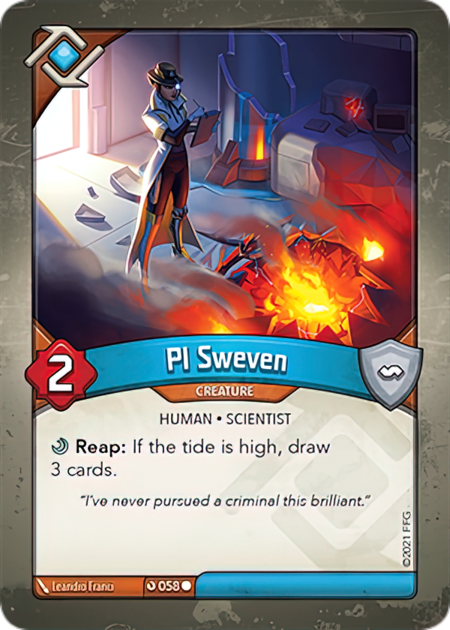
This is not to say you should always bid straight to the value that you think is correct. It’s very common for the players to evaluate the decks differently, especially in Adaptive Short when neither player has the luxury of seeing 2 games before bidding. Increasing the bids by 1 each time sets the pace of the bidding, and could discourage your opponent from doing a larger jump.
It’s also worth noting that the owner of the deck being auctioned may be able to handle more chains with the deck than you can. Their familiarity has some value for them, and you might consider trying to make them pay a premium for the right to play it. I would absolutely not recommend bidding higher than you would like to play the deck for, but if you’re on the fence about playing their deck at X chains, and think they’ll do too well with it at X-1, you might have to make a defensive bid to make them consider it for X+1 instead. The inverse works as well – if we’re bidding on my deck, and I brought a sufficiently complex deck, try to make your opponent take it for X+1 by being the first to place a bid at a number you know you’re comfortable with.
I would be remiss to not mention the psychological games that can be played during the bidding. Long pauses imply the player is not sure if they want to bid or pass, but it doesn’t always mean that. Conversely, quick bids show confidence, as if you know this is still well below the equilibrium you’re going for. Good preparation and planning of your strategy before the bidding starts can help you exude more confidence even if you’re right at the edge of your bidding limit. “Jump scares” (skipping a lot of numbers at once, like going from 1 to 6) could be sending the signal that you know the limit is way higher and you’re just trying to save time. Maybe they’re trying to bait you into doing another jump, or just going higher than you might have originally thought you would. Try not to let yourself get caught up in these signals, but be aware of these strategies.
Finally Ready to Play a Game?
As you can tell, a lot has already been said about the strategy of Adaptive Short – but we still haven’t even got to the “playing a game” part. This is when we get to the part where your preparation begins to pay off.
If you choose different decks and you’re playing your own deck, you can treat the game as an Archon match. You’re familiar with your deck, so focus on having empathy towards your opponent’s deck and their game plan. If you chose different decks and you’re playing with your opponent’s, stick to the vision you had for how to win the matchup, and try to exploit the weaknesses you know your own deck has.
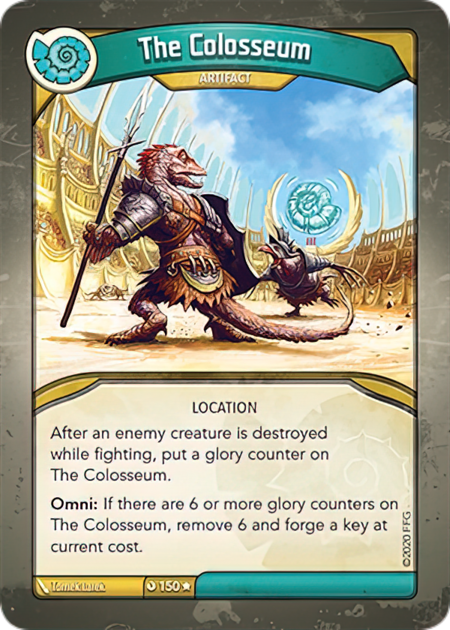
For all chained games, keep an eye on how many chains are left, and don’t be afraid to ask how many cards are in hand at various points. It can be easy to forget, so try to maintain clean play as much as possible on both sides. If a player accidentally drew too many cards at any point, you should call a judge over to help resolve fairly.
For games as the “underdog” (playing the deck without chains), if your opponent started with less than 6 chains, you will probably notice that the chains are gone quicker than you think. Try to press for advantage early on while they still have chains, such as by building and using your board before they find their creature control, or bursting above 6 even if you’re afraid of their Too Much To Protect or Interdimensional Graft. Often the chained deck spends the first few turns just trying to cycle cards, and they often don’t have the luxury of holding combo pieces that are found too early. If you see your opponent has already shed all of their chains, evaluate your situation to see if you feel you have made sufficient progress in your game plan to even out the match the rest of the way. It can be difficult to tell, and sometimes you may feel behind at this point. If so, you might be more inclined to take risks to win back the initiative.
If you’re playing the favorite (the deck with chains), come up with an early game plan for how you hope to tread water. Perhaps you mulligan for some archiving/efficiency, or just try to play the house that you have the most cards of in hand. You might have to get no value out of early cards just to keep the cards moving. If you have 8+ chains (and a 4 card hand), you might not have time to hold specific cards in your hand to get marginal value a few turns later. For instance, if you have 3 Logos and 1 Shadows in hand, but the Logos cards don’t help you yet (perhaps you have Twin Bolt Emission and Positron Bolt against an empty board), you might be better off just playing them for the æmber just to cycle more cards and take the value you can. Don’t forget, if you manage to get a board of 2 or 3 creatures in one house, but have no cards of that house in hand, it might be your best play to just use the board without playing anything and shed another chain – as long as you’re below 6 cards in hand, you will still shed a chain at the end of your turn whether you played any cards that turn or not.
No matter which side you are on, always make sure to appreciate the fact that you are getting the chance to play a balanced game of KeyForge between 2 players regardless of what deck you brought to the table. You could be playing an old favorite, something that doesn’t stand up to the current Archon meta anymore, and you still get to find that enjoyment out of the deck even years later. Win or lose, and especially if the game isn’t as close as you anticipated, look back at what happened that was unexpected. Did you miss something in your evaluation? Did you overbid for a deck you thought was a lot better? Use every game as a learning experience and a chance to get better. Adaptive is one of the best ways to hone your KeyForge skills, and I often find myself learning more about my own deck every single match I play.
Epilogue: Bidding Heuristics
Beta version 0.1
Originally, I was very hesitant to offer any heuristics for determining how much to bid in a matchup. KeyForge is a game of infinite variables, and there are no meaningful rules that could apply to every matchup in KeyForge. Heuristics can be good for learning, but more important for truly improving as a player is understanding when to break heuristics.
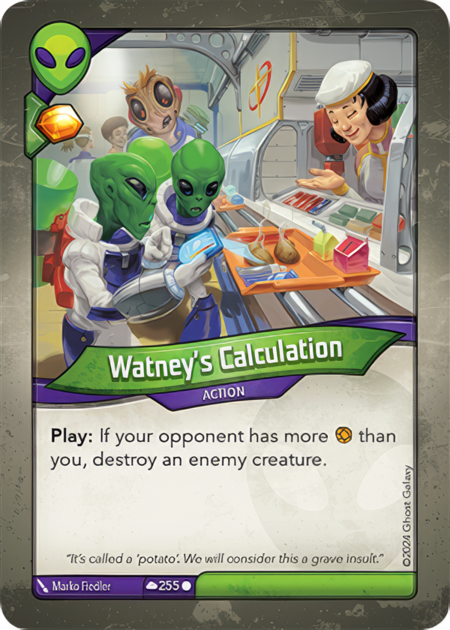
I do still have reservations about sharing heuristics here, because I worry it may do more harm than good, but I will offer some below with the caveat that this is an extremely imperfect science, and you should more often than not trust your instincts as opposed to these guidelines. The wide variety of archetypes and points of attack (disruption, efficiency, rush, creature control, etc) all depend heavily on the matchup, so buyer beware:
Starting point: 6 chains for the favored deck
From the starting point, add or subtract 2 chains for each of the following criteria:
Æmber burst
- If the favored deck has more æmber burst than the underdog, add 2 chains
- If the underdog has more æmber burst, subtract 2 chains
Creature count
- If the favored deck has more creatures, add 2 chains
- If the underdog has more creatures subtract 2 chains
Efficiency/Disruption
- If the favored deck has significant archiving or card draws, add 2 chains
- If the underdog has disruption (including random discards, Binding Irons to give chains, or “bounce” effects to send creatures or artifacts back to your hand), subtract 2 chains
Board wipes / creature control
- If the favored deck has more creature control cards in general, add 2 chains
- If the underdog has more creature control cards, subtract 2 chains
If any of the above categories are tied (or almost tied), call it a wash and do not add or subtract any chains.
It is worth noting that this model has been reasonably close to the average chain bids based on some of the Adaptive Shorts excercises conducted in the Sloppy Labwork discord server, however it has been a bit weaker in accurately predicting chain bids (when compared to players predictions) for matchups where the underdog has exceptionally high disruption and the favorite has exceptionally high efficiency. This limitation is something we're going to monitor and hopefully improve on in future versions of the heuristic model.
Under these heuristics, a deck would never be able to go above 12 chains. I think as you learn how to play adaptive best-of-one, it’s probably a good idea to not go higher than that anyway. There will certainly be matchups where more than 12 chains are needed to balance it, but until you play more adaptive and learn what those matchups look like, it is best to avoid bidding that high.
On the other side, if the above heuristics end up telling you to bid 0 or negative chains, the matchup should be fairly close, or perhaps you have chosen the wrong deck as the favored deck.